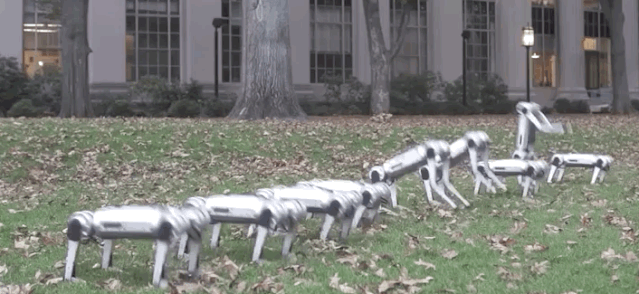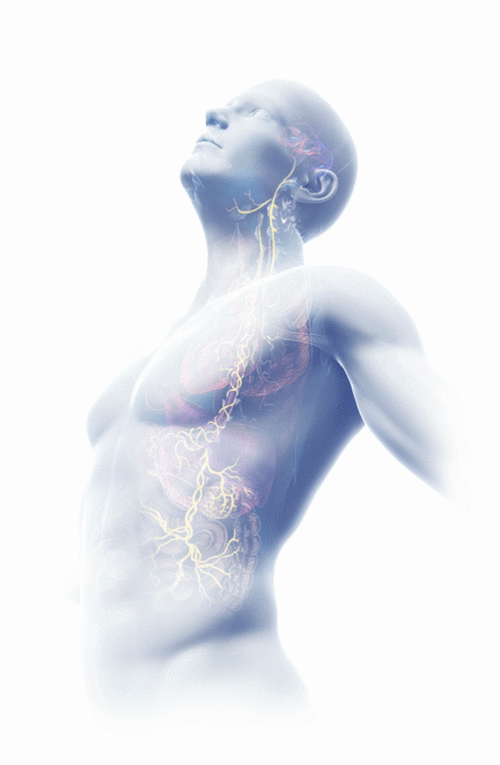.jpeg)
.jpeg)

Global/China/Japan/Uk/Us
HOCIT GROUP
Eye-catching AI company・AI venture IT master HOCIT GROUP
Message from industry leader
Global/China/Japan/Uk/Us
HOCIT GROUP
Eye-catching AI company・AI venture IT master HOCIT GROUP
Message from industry leader
Global/China/Japan/Uk/Us
HOCIT GROUP
Eye-catching AI company・AI venture IT master HOCIT GROUP
Message from industry leader

Global/China/Japan/Uk/Us/Canada
HOCIT GROUP
HOCIntelligentTechnology
哈牛桥智能科技集团
HOCインテリジェントテクノロジー(株)
Japan-China Trade & Promotion Artificial Intelligence Deep Learning Association
Eye-catching AI company・AI venture IT master HOCIT GROUP
Message from industry leader.High-tech enterprise




.jpeg)




DX:Digital Transformation
AI IOT 5G Cloud
.jpeg)




Harvard University, Oxford University
Cambridge University
, MIT University




















HOCIntelligentTechnology
哈牛桥智能科技集团
HOCインテリジェントテクノロジー(株)
普通法人协会日中贸易促进人工智能深度学习协会
一般社団法人日中貿易振興人工知能ディープラーニング協会
Japan-China Trade & Promotion Artificial Intelligence Deep Learning Association
Eye-catching AI company・AI venture IT master HOCIT GROUP
Message from industry leader .High-tech enterprise
STOP COVID-19 × AI, IoT, Internet of Things, RPA, OCR-AI, ERP, cloud, bigdata, blockchain, ICT, 5G, 3D, AR, VR, iCLIP, core industrial software, smart chips, smart driving, core algorithms, neutrinos, quantum Top cutting-edge Technology Pioneering the future in an environment where the latest technologies and products are involvedEducation/Medical/Healthcare/Finance/Sports/Security/autonomous/Robot/IOT/ICT/Smart Manufacturing/Smart Transportation/Smart City/Smart Home/Smart Logistics/AI Real Estate/AI Marketing/AI Advertising/AI Agriculture and other fields





Top 10 scientists worldwide in ours Team
Among them, the familiar statistical machine learning man Michael I. Jordan ranked 4th, and the deep learning gods and the 2018 Turing Award winners Geoffrey Hinton and Yoshua Bengio ranked 9th and 10th respectively.
In addition, there are two Chinese scholars among the top 10 computer scientists, namely Jiawei Han, professor of computer science at the University of Illinois at Urbana-Champaign, and Philip S. Yu, professor of information technology at the University of Illinois at Chicago.

.jpeg)





.jpeg)







.jpeg)



























.jpg)
.jpg)

.jpg)









































.jpeg)



.jpeg)



The new coronavirus infectious disease "COVID-19" that is raging all over the world. Not only is it a health hazard to humans, but it is also seriously damaging society and the economy as a whole. What should the world economy aim to revive from here?
In this special issue, we interviewed leading industry representatives in each industry and explored the impact of the coronavirus on the industry, structural reforms to be made, and the path to hope ahead of corona. ..




.jpeg)






.jpg)












.jpg)







.jpeg)









Leading company's digital transformation 【DX Business Consultant Service Consultant Industry Leader
[IT engineer] Inexperienced OK! There is customer resident, system development for contract projects 100%, in-house development
In-house product development industry leader
.jpeg)






_%E3%83%9A%E3%83%BC%E3%82%B8_1.jpg)













.jpeg)










HOCIT GROUP
HOCIntelligentTechnology
哈牛桥智能科技集团
HOCインテリジェントテクノロジー(株)
普通法人协会日中贸易促进人工智能深度学习协会
一般社団法人日中貿易振興人工知能ディープラーニング協会
Japan-China Trade & Promotion Artificial Intelligence Deep Learning Association
Eye-catching AI company・AI venture IT master HOCIT GROUP
Message from industry leader
STOP COVID-19 × AI, IoT, Internet of Things, RPA, OCR-AI, ERP, cloud, bigdata, blockchain, ICT, 5G, 3D, AR, VR, iCLIP, core industrial software, smart chips, smart driving, core algorithms, neutrinos, quantum Top cutting-edge Technology. Pioneering the future in an environment where the latest technologies and products are involvedEducation/Medical/Healthcare/Finance/Sports/Security/autonomous/Robot/IOT/ICT/Smart Manufacturing/Smart Transportation/Smart City/Smart Home/Smart Logistics/AI Real Estate/AI Marketing/AI Advertising/AI Agriculture and other fields



.jpeg)





















.jpg)










































.jpeg)





.jpeg)
The consciousness of Harvard University, Oxford University, Cambridge University is the leading research and academic field of Harvard University, Oxford University, Cambridge University. The research and development team has more than 380 people. ERP consulting, artificial intelligence computer vision, natural language processing technology, data mining advanced data analysis , Cross-media analysis and reasoning technology, intelligent adaptive learning technology, swarm intelligence technology, autonomous unmanned technology, smart chip technology, brain-computer interface technology and other high-tech cutting-edge technologies in security, finance, retail, transportation, education, medical care, manufacturing, health Leading technology

.jpg)









DX:Digital Transformation
AI IOT 5G Cloud









Our mission is to increase
the GDP of the internet
Stripe is a technology company that builds economic infrastructure for the internet. Businesses of every size—from new startups to public companies—use our software to accept payments and manage their businesses online.
Our mission is to increase
the GDP of the internet
Stripe is a technology company that builds economic infrastructure for the internet. Businesses of every size—from new startups to public companies—use our software to accept payments and manage their businesses online.
Stripe is a technology company that builds economic infrastructure for the internet. Businesses of every size—from new startups to public companies—use our software to accept payments and manage their businesses online.












.jpeg)

AI×healthy


Kiyooka University,
University of Tokyo






California Institute of Technology University
.jpeg)





Top 10 scientists worldwide in ours Team
Among them, the familiar statistical machine learning man Michael I. Jordan ranked 4th, and the deep learning gods and the 2018 Turing Award winners Geoffrey Hinton and Yoshua Bengio ranked 9th and 10th respectively.
In addition, there are two Chinese scholars among the top 10 computer scientists, namely Jiawei Han, professor of computer science at the University of Illinois at Urbana-Champaign, and Philip S. Yu, professor of information technology at the University of Illinois at Chicago.
With the world's leading AI, IoT, RPA, OCR-AI, ERP consulting, cloud, bigdata, blockchain, ICT, 5G, 3D, AR, VR, iCLIP, aviation design software, core industrial software, core algorithms, China Micro Top core technologies such as quantum computing, artificial intelligence, smart driving, smart chips, edge computing technology, robotics and automation systems, smart phones and cloud computing, smart cities, etc. These core technologies all come from independent research and development and have independent intellectual property rights. Actively advocate sunshine and health
The corporate values of the business philosophy, compliance with applicable laws and regulations, product technologies are widely used in smart chips, education, healthcare, finance, sports, security, new retail, unmanned driving, robots, IOT, ICT, smart manufacturing, smart transportation, smart cities , Smart home, smart management, RPA, smart factory, smart logistics, AI real estate, AI marketing, AI advertising, AI agriculture and other social inclusive fields
OUR TEAM
Harvard University, Oxford University Cambridge University, MIT University, California Institute of Technology University, Tsinghua University, Tokyo University, Kyoto University, Beijing University, Stanford University Zhejiang University, Tohoku University Hong Kong, Osaka University National University of Singapore, University of Science and Technology of China Seoul University PhD composition of Fudan University






_%E3%83%9A%E3%83%BC%E3%82%B8_2.jpg)
_%E3%83%9A%E3%83%BC%E3%82%B8_1.jpg)







.jpg)

















.jpg)


















.jpg)













Kyoto University,
Beijing University
Increased demand due to corona damage!
In system thinking
Create business,
A new service is born!















Stanford University






Zhejiang University,
Northeastern University





With a full remote team Prove the power of design,STOP COVID-19 × AI, IoT, Internet of Things, RPA, OCR-AI, ERP, cloud, bigdata, blockchain, ICT, 5G, 3D, AR, VR, iCLIP, core industrial software, smart chips, smart driving, core algorithms, neutrinos, quantum Top cutting-edge Technology
Bring the power of technology-driven design,AI, IoT。。。Top cutting-edge Technology
teams to your projects













STOP COVID-19 × AI, IoT, Internet of Things, RPA, OCR-AI, ERP, cloud, bigdata, blockchain, ICT, 5G, 3D, AR, VR, iCLIP, core industrial software, smart chips, smart driving, core algorithms, neutrinos, quantum Top cutting-edge Technology. Pioneering the future in an environment where the latest technologies and products are involvedEducation/Medical/Healthcare/Finance/Sports/Security/autonomous/Robot/IOT/ICT/Smart Manufacturing/Smart Transportation/Smart City/Smart Home/Smart Logistics/AI Real Estate/AI Marketing/AI Advertising/AI Agriculture and other fields








Hong KongUniversity, Osaka University
National University of Singapore,
University of Science and Technology of China
Seoul University Fudan University
Kyoto University,
Beijing University






.png)








.jpg)

.jpg)









.jpeg)



.jpg)

Media
https://www.jcdla.org
Smart City
Smart Transportation









.png)












.jpg)


































.jpeg)

STOP COVID-19 × cutting-edge technologies Technology


AI,IoT物联网,RPA, OCR-AI ,ERP,cloud,bigdata,blockchain,ICT,5G,3D,AR, VR,iCLIP,
核心工业软件,航空设计软件、智能芯片,智能驾驶,核心算法,中微子,量子计算人工智能机器人与自动化系统
、智能手机与云端计算、智能城市等顶尖前沿科技。
哈牛桥智能科技南京公司在南京江北新区软件园高新企业是哈佛大学,牛津大学,剑桥大学为主的研究学术界的领域
领先顶尖博士研发团队超过380人ERP咨询,人工智能的计算机视觉,自然语言处理技术,数据挖掘高级数据分析,
跨媒体分析推理技术,智适应学习技术,群体智能技术,自主无人技术,智能芯片技术,脑机接口技术、
边缘计算技术等高科技前沿技术在安防,金融,零售,交通,教育,医疗,制造,健康等领域处于领先技术
JSAI人工智能学会正式会员,IEEE会员,SIGIR 会员CAAI中国人工智能学会会员,AAA1国际人工智能学会会员
。英国人工智能中国ACM专员ACM的成员,主要研究领域包括ERP咨询,云技术,大数据,区块链,人工智能专家
,计算机视觉,多媒体技术和机器学习。
AI,IoT物联网,RPA, OCR-AI ,ERP,cloud,bigdata,blockchain,ICT,5G,3D,AR, VR,iCLIP,
核心工业软件,航空设计软件、智能芯片,智能驾驶,核心算法,中微子,量子计算人工智能机器人与自动化系统
、智能手机与云端计算、智能城市等顶尖前沿科技。用于政府/地方政府,教育/医疗/医疗保健,金融,制造业,物流,通讯
/广播,建筑/房地产,电力/燃气/水,网络,制药,农业,安防,新零售,,制造,交通,体育,宇宙航空,广告,IOT,
ICT等行业。 AI记者 体育 智能驾驶 AI会计 律师 AI手术机器人 AI问诊 误诊没 ai机器人葬礼 VR AR 3D AI犯罪
追踪 AI图像识别智能城市,智慧家居,智能管理、RPA, 智能工厂、 智能物流,AI房地产,AI营销,AI广告,
AI农业,AI游戏,智能电网,智能港口,智能旅游,无人机,新媒体,AI5G远程医疗,AIARVR智能远程教育 等
社会普惠等领域
IEEE,NIPS、ICML、COLT、CVPR、ICCV、ECCV、IJCAI、AAAI、UAI、KDD、SIGIR、WWW、ACL
、PAMI、IJCV、JMLR、AIJ的连续发表1000篇以上顶级学术论文. 人工智能竞赛获奖500次以上
高新企业哈牛桥智能科技和微软,微软剑桥研究院,IBM、三星、H2o,谷歌,英特尔、HP,intel,亚马逊,CAPCOM,Domo, 株式会社MonotaRO,久保田机械,SCSK株式会社,株式会社クボタ,小松机械,清水建筑,阿里巴巴,恒生电子、雅虎,腾讯,华为,Facebook 巴黎研究院,SAP,oracle,salesforce,英国利物浦球队和李宁体育,阿里体育,momenta,韩国首尔实体店Super Sports XEBIO (슈퍼스포츠 제비오)体育用品实体店,TikTok(抖音 Douyin),NVIDIA ,NTT,NTTDATA,软银,三星 DIDI智能驾驶,freee株式会社, アビームコンサルティング株式会社, 株式会社アルトナー , 株式会社DeNA,株式会社システナ ,TDK株式会社,美国工业机器人智能机器人Boston Dynamics,東芝情報システム株式会社,日立,NEC,TOYOD,三菱集团,三井集团,TIS, KONAMI,PWC, 埃森哲咨询、毕博咨询, 凯捷-安永咨询,德勤咨询,IBM咨询,sas,haoop,matlab,Tableau小林製薬,苏宁集团,京东 TOYODA 本田商汤科技(SenseTime)旷视 依图 Momenta 地平线 第四范式、高通、飞利浦、西门子、索尼、英特尔、佳能等名企有合约.研发中心南京总部,杭州总部,上海总部,台州分部,丽水分部,苏州分部等,全球 日本,英国,美国,韩国。。哈牛桥智能技术公司-高科技公司集团,哈牛桥智能技术公司-总裁和全体员工拥有国际专利,东京大学哈佛牛津剑桥的博士学位专家。 JSAI人工智能协会常规会员,IEEE会员,SIGIR会员,CAAI会员,中国人工智能协会会员。 AAA1国际人工智能学会。 ACM CAAI中英人工智能协会ACM会员,日本深度学习协会会员,该协会有6位来自美国,加拿大和法国的图灵奖获得者。杰弗里·欣顿(Geoffrey Hinton),艾伦·凯(Alan Kay),朱迪亚·珀尔(Judea Pearl),曼努埃尔·布鲁姆(Manuel Blum),约瑟夫·西法基斯(Joseph Sifakis),约翰·霍普克罗夫特(John Hopcroft)。值得注意的是,Geoffrey Hinton在刚刚发布的《指南2研究2020年全球计算机科学家排名》中,在“计算机科学十强”排名中名列第九。此外,在排名第一的Anil Jain是Haruo Bridge技术研发中心的总监
哈牛桥智能科技团队的特点是名校毕业,理工出身,管理精英,美国硅谷 美国哈佛 ,MIT,英国牛津剑桥,思路清晰。依赖科技创新性,先进管理,准入门槛高,建立网络效应、品牌效应、专利技术和规模效应,竞争是为失败者准备的,哈牛桥智能科技,能够做到别的公司根本无法做到的业务。确定哈牛桥智能科技的 CAC/LTV 比率(即付费市场营销的用户获取成本 / 用户终身价值比率)不断提高这个比率。建立哈牛桥智能科技的核心竞争力利基市场爆炸式增长,哈牛桥智能科技团队成功的合作10年以上经历团队,市场牵引力的盈利数据是上升的
技术公司设系统运行总部、技术开发总部、市场总部、规划部、综合管理部。系统运行总部,承担技术系统的验收、运行和监控,负责主机、网络、基础设施的维护与更新,及时处置系统突发异常,保障各类技术系统的安全运行,下设运行一部、运行二部、系统验收部、环境网络部。技术开发总部,负责统一实施上交所交易系统、业务管理系统及数据处理系统开发建设,下设技术基础架构部、竞价平台开发部、创新业务部、业务管理系统开发部、质量保障部、大数据开发部。市场总部,负责面向市场提供技术服务和创新产品服务,下设产品管理部、数据中心业务部、客户服务部、新产品服务部。规划部,承担技术总体规划,行业标准制定及发布,技术审计,整体安全策略等职能。综合管理部,统筹负责办公、人事、财务、法务、党务、纪检、采购、后勤等职能。
泽原形象工作室是哈牛桥智能科技的连锁AIVR一个计划并制作数字广告素材的创意工作室。同时开展AI美发美容设计,AI服装形象设计,AI家居设计,AI室内设计,AI建筑设计
.jpeg)


HOC Intelligent Technology Nanjing Co., Ltd. The high-tech enterprise in the Jiangbei New Area Software Park in Nanjing is Harvard University, Oxford University, and Cambridge University. The leading research and development field in the academic field is more than 380. ERP consulting, artificial intelligence computer vision, natural language processing technology, Data Mining Advanced Data Analysis ,cross-media analysis and reasoning technology, intelligent adaptive learning technology, swarm intelligence technology, autonomous unmanned technology, smart chip technology, brain-computer interface technology and other high-tech cutting-edge technologies in security, Leading technologies in finance, retail, transportation, education, medical, manufacturing, health, etc.
JSAI artificial intelligence society full member, IEEE member, SIGIR member CAAI Chinese artificial intelligence society member, AAA1 international artificial intelligence society member. Member of ACM, ACM Commissioner of British Artificial Intelligence China. The main research areas include ERP consulting, cloud technology, big data, blockchain, artificial intelligence experts, computer vision, multimedia technology and machine learning. 1500467240@qq.com
AI, IoT, Internet of Things, RPA, OCR-AI, ERP, cloud, bigdata, blockchain, ICT, 5G, 3D, AR, VR, iCLIP, Aviation Design Software、core industrial software, smart chips, smart driving, core algorithms, neutrinos, quantum Top cutting-edge technologies such as computing artificial intelligence robots and automation systems, smartphones and cloud computing, and smart cities. For government / local government, education / medical / healthcare, finance, manufacturing, logistics, communications / broadcasting, construction / real estate, electricity / gas / water, networking, pharmaceuticals, agriculture, security, new retail, manufacturing, transportation , Sports, aerospace, advertising, IOT, ICT and other industries. AI reporter sports intelligent driving AI accounting lawyer AI surgery robot AI questioning misdiagnosis no AI robot funeral VR AR 3D AI crime tracking AI image recognition smart city, smart home, smart management, RPA, smart factory, smart logistics, AI real estate, AI marketing , AI agriculture and other social inclusive areas
IEEE, NIPS, ICML, COLT, CVPR, ICCV, ECCV, IJCAI, AAAI, UAI, KDD, SIGIR, WWW, ACL, PAMI, IJCV, JMLR, AIJ have continuously published more than 1,000 top academic papers. The artificial intelligence competition won 500 More than
Harbin Bridge Intelligent Technology and Microsoft, Microsoft Cambridge Research Institute, IBM, Samsung, H2o, Google, Intel, HP, Intel, Amazon, CAPCOM, Domo, Monota RO, Kubota Machinery, SCSK Co., Ltd., Kubota, Komatsu Machinery , Qingshui Building, Alibaba, Hang Seng Electronics, Yahoo, Tencent, Huawei, Facebook Paris Academy, SAP, oracle, salesforce, Liverpool UK and Li Ning Sports, Ali Sports, momenta, Super Sports XEBIO (슈퍼 스포츠) in Seoul, South Korea 제비 오) Sports goods physical store, TikTok (Douyin), NVIDIA, NTT, NTTDATA, SoftBank, Samsung DIDI Intelligent Driving, freee Corporation, ABeam Consulting Co., Ltd., Altloo, DeNA, Co., Ltd., TDK Co., Ltd., American Industrial Robot Intelligent Robot Boston Dynamics, Toshiba Information System Co., Ltd., Hitachi, NEC, TOYOD, Mitsubishi Group, Mitsui Group, TIS, KONAMI, PWC, Accenture Consulting, BearingPoint Consulting, Capgemini-Ernst & Young Consulting, Deloitte Consulting, IBM Consulting, sas, hao Op, matlab, Tableau Kobayashi system, Suning Group, JD TOYODA Honda Shangtang Technology (SenseTime) despised according to Figure Momenta, the fourth paradigm of the horizon, Qualcomm, Philips, Siemens, Sony, Intel, Canon and other famous companies have contracts. R & D Center Nanjing Headquarters, Hangzhou Headquarters, Shanghai Headquarters, Taizhou Branch, Lishui Branch, Suzhou Branch, etc., Global Japan, Britain, United States, South Korea. .
